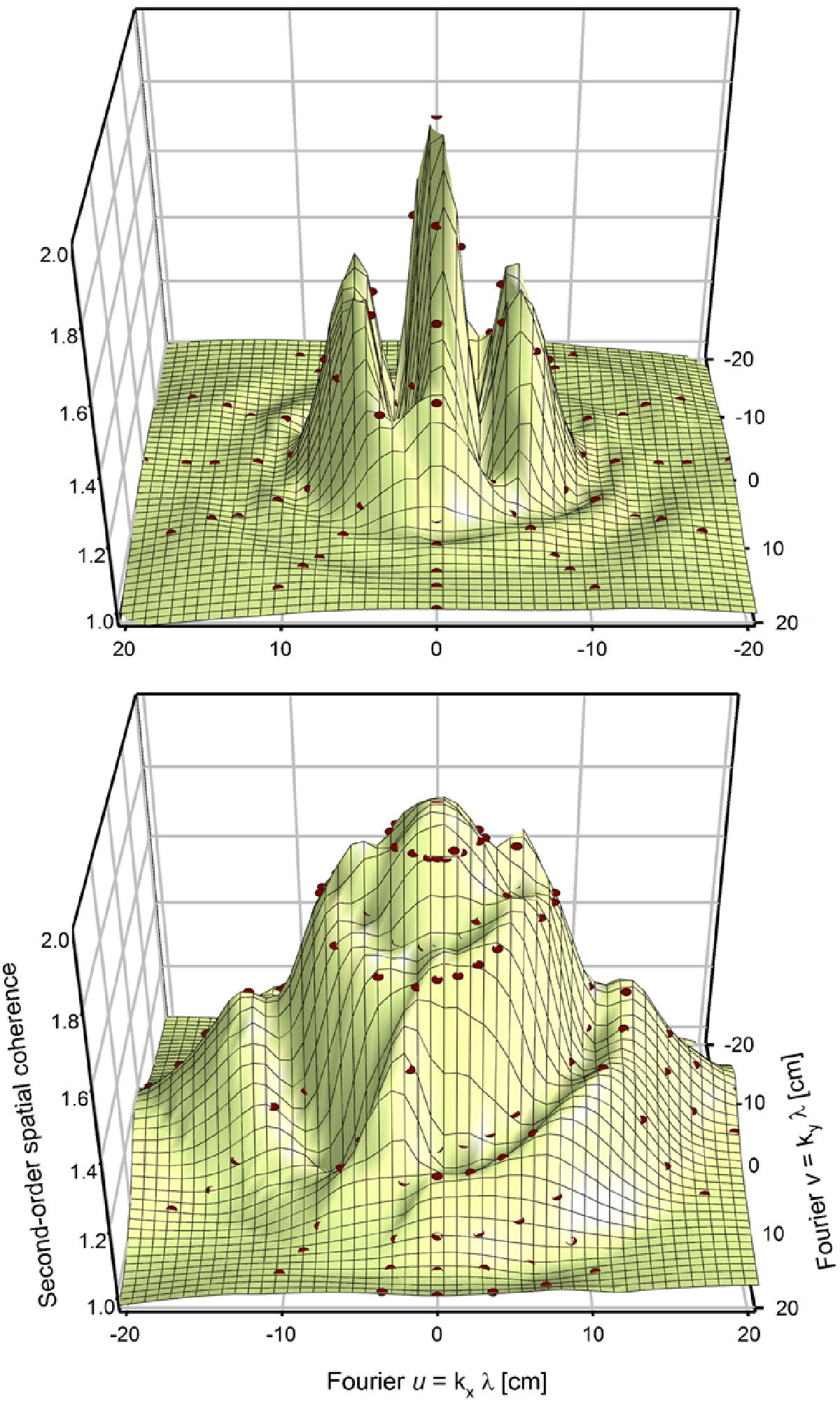Fig. 6

Second-order spatial-coherence surfaces 1(2) measured at λ 532 nm for artificial stars in the laboratory. Top: binary “star” with equal components of diameter ~1 arcsec, from intensity correlations measured between pairs of telescopes across 60 different non-redundant baselines. The pattern of central maxima indicates the binary separation while the symmetric rings reveal the size of individual stars. Black dots mark individual data points, also used in the later image reconstructions (the surfaces merely connect these measured points). Bottom: a somewhat irregular and elliptical “star” of just below 1 arcsecond, measured over 100 baselines. The data span the interferometric (u, v)-plane of the Fourier transform of the source image with different spatial (angular) wavenumbers k, corresponding to different telescope baseline lengths and orientations. These maps provide the [moduli of the] Fourier transforms of the source images, analogous to the first-order diffraction patterns of intensity produced in coherent light (Fig. 1). Images reconstructed from these data are in Fig. 8.
Current usage metrics show cumulative count of Article Views (full-text article views including HTML views, PDF and ePub downloads, according to the available data) and Abstracts Views on Vision4Press platform.
Data correspond to usage on the plateform after 2015. The current usage metrics is available 48-96 hours after online publication and is updated daily on week days.
Initial download of the metrics may take a while.


